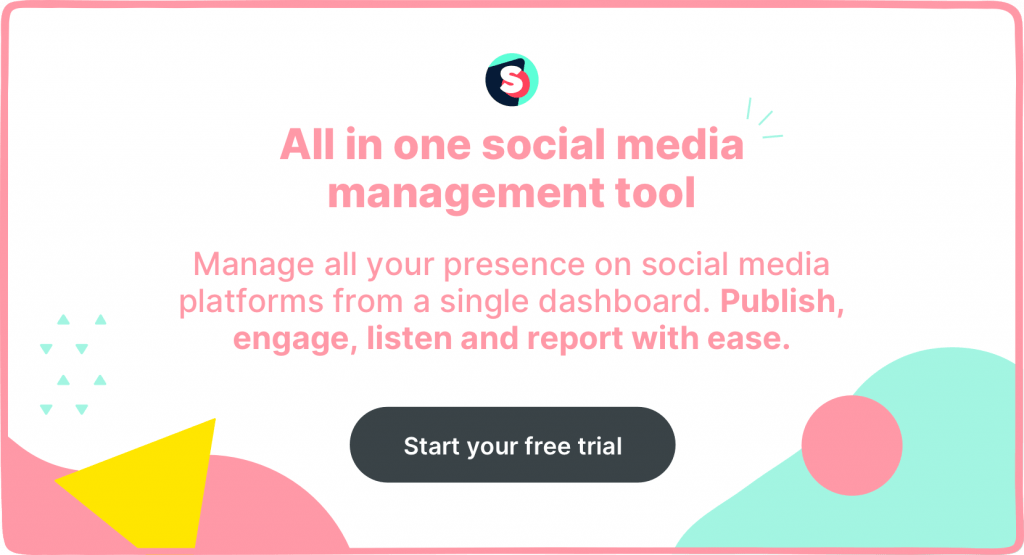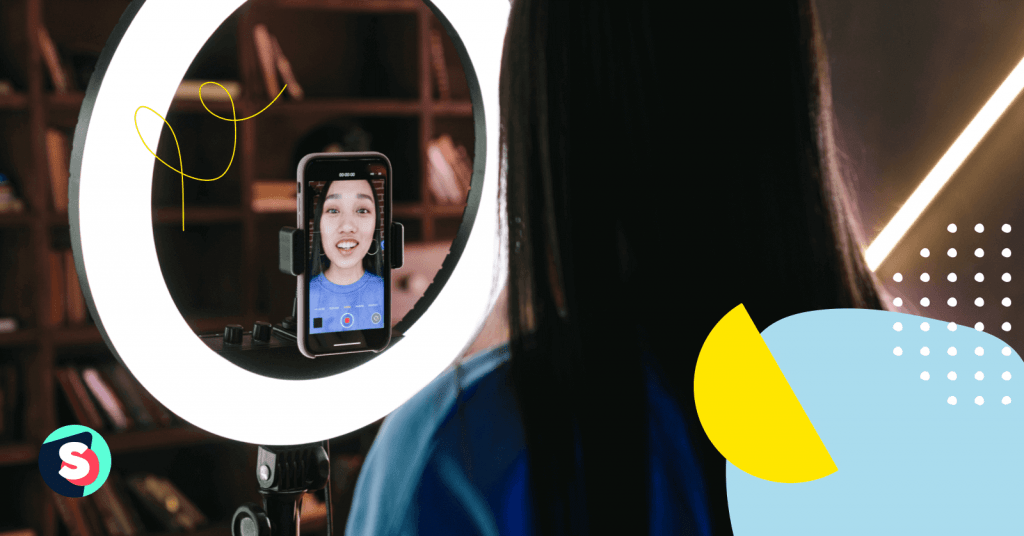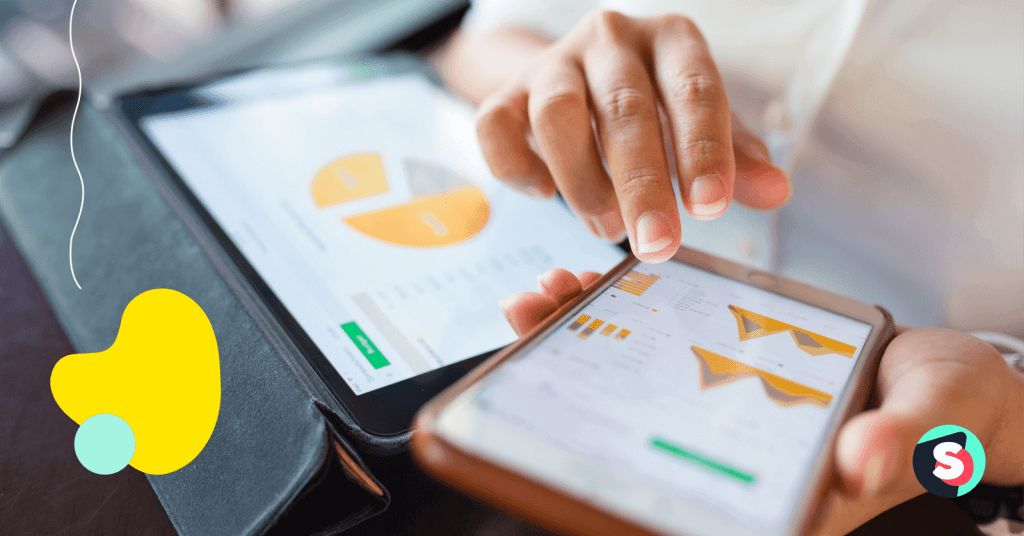Summarize this article via
Over recent years, influencer marketing really took off and is now a great way for many companies to let their potential customers know about their brand. With people becoming more and more resistant to marketing campaigns, influencer marketing presented itself as a new road to customers’ hearts. People would much rather trust an individual than a corporation.
If executed correctly, influence marketing can help you effectively boost your brand recognition and connect with your target audience. In this article, we’ll discuss how you can search social media influencers and what are the ingredients of an effective influencer marketing campaign.
The rise of social media influencer marketing
Social media influencer marketing took off at the beginning of the last decade. It’s a combination of old and new marketing tools. With the rise of social media, this new medium of marketing was born. People who loved to share their opinions became trusted sources among social media users.
Influencers and companies alike didn’t fail to see the potential of their following on social networks so they started collaborating with one another, and the rest is history as they say. In 2019, the influencer marketing industry is estimated to be worth $8 billion with analysts expecting the worth to increase to $15 billion by 2022.
Why influencer marketing
Influencers usually have a very niche audience following and are a great way to reach that audience. There are influencers who managed to gain their audience’s trust and therefore, in case of a good review, the popularity of your product will significantly increase.
There are two main types of influencer campaigns: Sponsored Content and Product Review.
With Sponsored Content, your company just becomes the sponsor of one of their posts, videos or other content that they produce. Your product will be briefly mentioned as an advertisement break.
Product Review, on the other hand, will get your product or service a better exposure. In this case, the influencer dedicates a full piece of content to reviewing your product with its pros and cons. This doesn’t always guarantee a positive review of your brand. It all depends on the influencer again.
Some influencers agree to show the review before publishing to get your confirmation and others don’t. There are influencers who want to hold their independent reviewer status and ones that agree to be a part of a marketing campaign.
Usually, the first type of influencers have more trust and will have a stronger impact on your brand perception. The second type will help you get a better exposure but depends on how the review is carried. Some biased reviews can result in a backlash for both the influencer and the product. So make sure to take into consideration the negative scenarios and have a plan for it before you start an influencer campaign.
When it comes to measuring the effectiveness of your influencer marketing return of investment (ROI) there are four categories to keep in mind:
- Return on ad spend (ROAS): With a custom UTM, you can see the amount of traffic that you received. Make sure to follow that traffic and see what percentage converted from that specific influencer campaign.
- Reach: This category measures the exposure that your campaign helped your brand achieve. It’s usually measured by views and impressions. If the goal of the campaign was to raise brand awareness, then this is the one to concentrate on.
Related article: Which is more important: Reach vs. Impressions
- Engagement Rate: A very self-explanatory category, measures how many people engaged with the campaign.
- Social Sentiment: Shows the type of reaction people have shown on the internet for the campaign.
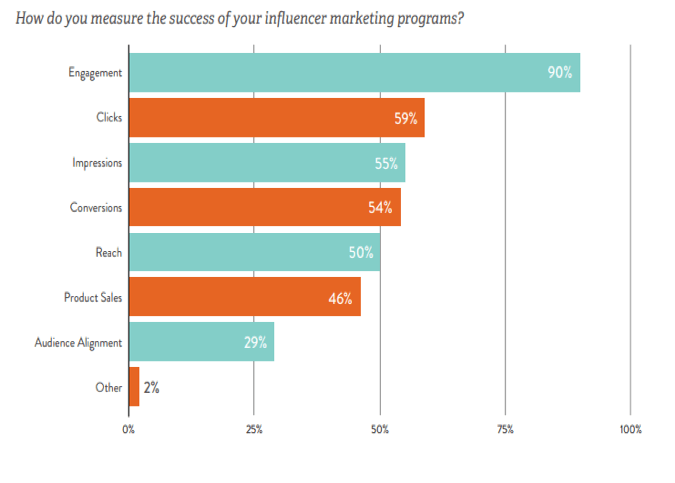
According to Linqia’s The State of Influencer Marketing report, 90% of the participants answered that Engagement is their main measure of success.
Related article: Why micro-influencers matter? Here is how to launch an Instagram micro-influencer campaign
Social media influencers vs popular accounts
Not every popular social media user is an influencer. You can collaborate with popular accounts but that doesn’t necessarily mean they are influencers. The main difference between popular accounts and influencers is that influencer accounts generate content to educate their audience about their niche topic, therefore they are more trusted by their audience.
There are many accounts with large followings that are consisted mostly of bots or inactive accounts. Therefore make sure to properly analyze any account during your consideration stage.
Take a look at the content they provide, the consistency, and the engagement on their posts. Accounts with bot following will have very little engagements on their posts. While you shouldn’t expect their entire following to engage with their every post, you should check for a proper engagement rate in terms of their following.
Types of social media influencer campaigns
Before you reach out to influencers you need to have a campaign in mind. How is the influencer going to present your brand? What will be the goal? How are you expecting their following to engage with your brand? This will help you identify what KPI’s you need to take into account when selecting a social media influencer and what goals you should set for the campaign.
Here’s a brief overview of the popular types of influencer campaigns:
- Sponsored Social Media Content
- Product Review
- Affiliate Marketing
- Social Media Takeover
- Giveaways Through Influencers
- Brand Ambassador Programs
How to find social media influencers
The process of finding social media influencers should be done patiently. Try not to rush the process if you don’t have prior knowledge of the influencers in your niche. Start by analyzing social networks of your choice for videos that relate to your niche. It’s a good idea to combine a simple search with analyzing tools.
Simple search
It’s a good idea to analyze related popular keywords and hashtags that you can use to find influencers. For social networks like Facebook, Twitter, and LinkedIn hashtags are the way to go, for YouTube on the other hand keywords are what you need. Hashtags are new to YouTube and haven’t gained so much popularity. This doesn’t mean that you shouldn’t search with hashtags on YouTube, just don’t limit your search to hashtags only.
✨ Bonus Article: Debunking 6 Instagram hashtags myths social media marketers follow
Tool search
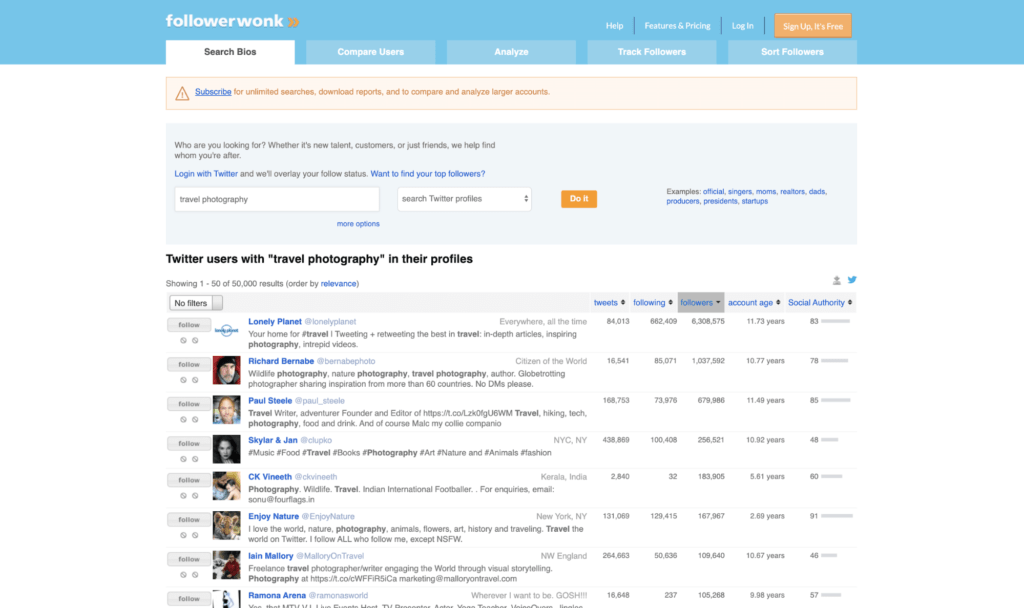
Tools like Followerwonk, Buzzsumo, and Trendspottr are great ways to take your research further and get statistics about the influencers that you’re interested in. These tools allow you to find accounts by using keywords and see the number of tweets, followers, how many people they’re following, their account age, and social authority.
It is not recommended to solely rely on these tools, because they might not be 100% accurate. Also, you shouldn’t just base the selection of social media influencers based on their statistics only. It’s important to take their content into account as well. This is why using tools to find influencers is complementary rather than supplementary.
Furthermore, make sure to make it easy for influencers to get in touch with you in case they are interested in reviewing your product. It’s also a good idea to develop a campaign where you send free samples to influencers for testing.
With the right campaign and the right social media influencer, you can boost your brand’s popularity not only on digital platforms but outside of it as well. Just make sure to follow the steps above and plan your campaign accordingly.
